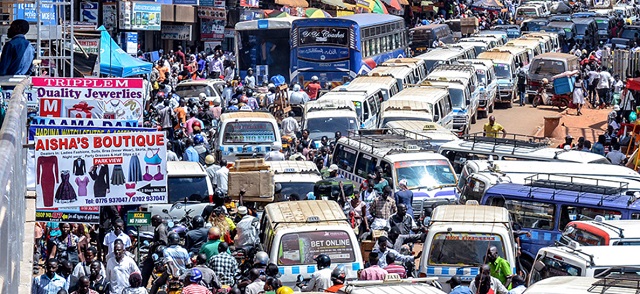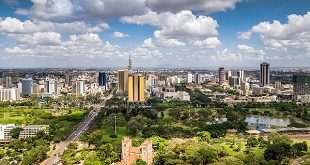
Same old solution proposed, same disagreement raised
Kampala, Uganda | PATRICIA AKANKWATSA | Kampala City managers, experts and interested residents on July 07 witnessed the virtual launch of the Global Labour Institute (GLI) report titled; Urban Public Transport System: Understanding Kampala’s Para transit Market Structure.
The discussion that followed focused on an old proposal to decongest the city, the Bus Rapid Transport (BRT) system.
The BRT is a bus-based transport system designed to decongest city roads by carrying more passengers in a more reliable manner than conventional bus and taxis. Its main feature is bus-only dedicated road lanes that cannot be used by vehicles other than large buses operated by BRT companies with designated interchanges, terminals and modern stations along the routes. It often involves building new roads or remodeling existing ones.
Once again, different speakers with ideas on urban planning weighed in on how the BRT system can work or not in Kampala city.
Amanda Ngabirano, an urban and regional planner,said“the beauty with this form of transport is that it carries more people. Each bus can take like 74 passengers.”
She says for the BRT to work in Kampala, it needs to be integrated with other means of transport such as to build a complete and consistent transport system. This means government must have the desire to embrace and be ready to work with the current transport operators, she said.
“In the report, the findings show that the current transport operators are worried that when BRT is introduced, they will lose their jobs,”she says, “But we still need these boda bodas and taxis. They can’t be wiped out because the way the BRT works, there are places where the buses can’t reach. This is where the bodas and taxis come in.”
Ngabirano says that since the main role of BRT is helping decongest the city, the government should find ways of making public transport attractive.
“Private cars should be attracted to the bus. The stations should have convenient parking spaces for cars in that instead of all us driving cars to town, you park your car at a bus station and get on the bus. You can pick it in the evening to take you further where the bus can’t reach”, she says.
She says, however, the BRT system cannot take off immediately. She says it must be phased and run all systems at ago in the meantime.
In 2010, the Works ministry, represented by KCC, (now KCCA) carried out feasibility studies for a BRT system to serve a greater Kampala Metro Area, as was proposed in the National Transport Master plan.
Feasibility studies for the Pilot Kampala Bus Rapid Transit (KBRT) were later carried out. The consultant made a number of recommendations, including high capacity vehicles, high trip frequencies, reduced junction delays, side platforms, BRT lanes in the middle of the road, and non-on-board ticketing systems among others.
Amin Tamale Kiggundu, an urban planning expert based at Makerere University’s department of Architecture and physical planning says that BRT is not the best way to decongest the city because it involves a lot of money.
“Public transport is a complicated sector. Fares remain unchanged for a long time yet the costs of maintenance are high. This why good programmes like the Pioneer buses failed. Government never gave them loans. They had to get expensive commercial loans with high interest rates,” Kigundu says.
“There is no way this system can self finance itself. The government needs to support the private bus operators by giving them subsidies and cheaper loans,” he adds.
But the report says that nearly all BRT projects in Africa, one of the key priorities is to operate BRT without publicsubsidy, and preferably at a profit that could generate tax revenue for the government yet experience in other cities indicates that BRT operations are frequently loss-making.
According to the report, the proposed underlying business model is that the BRT infrastructure (roads, stations) would be owned by the government, but that the bus operations would be tendered out in ten-year contract, on the assumption that this would be the economic lifetime of the vehicles. It is suggested that the financing could be provided by the bus manufacturer.
Kiggundu also says that however much the BRT system seems like a good plan, it will be hard to align infrastructure because the city is poorly planned.
“People live everywhere. People don’t live along the transport corridor fixed route,” he says.
Kiggundu says, “I think the city managers need to think of her how to re-organise the city. We don’t have infrastructure to run this system”
“Land is being used in a poor way. Most of the land is privately owned and people are in scattered settlements. When you look at Kampala, there is nowhere to even put the stations. A lot of people have to be displaced,” he says.
According to the report, the current transport system has no standards, is not regulated and this is not good for a city that is rapidly developing.For example the report does not show the exact number of boda bodas from their research.
Ngabirano says this why we need the BRT system because it is easy to regulate and can easily be planned with.
She says with BRT, fares can be fixed but the government needs to fully be involved in the project by providing the needed infrastructure and enforcement.
****
 The Independent Uganda: You get the Truth we Pay the Price
The Independent Uganda: You get the Truth we Pay the Price



